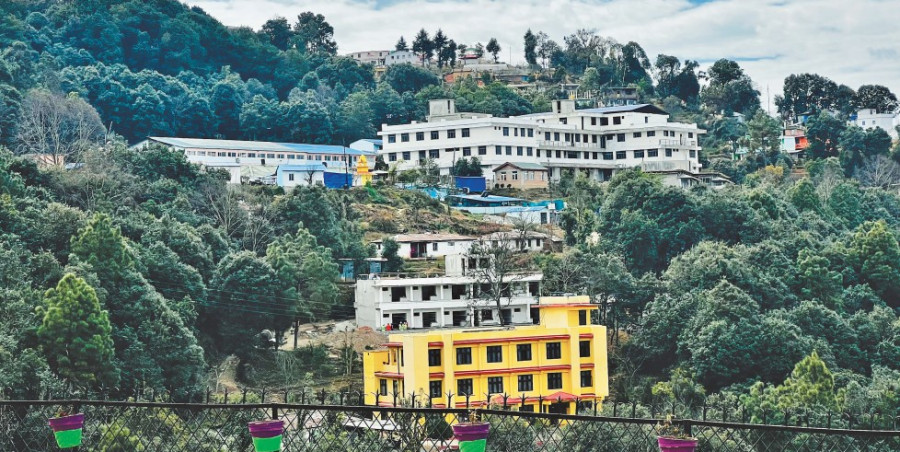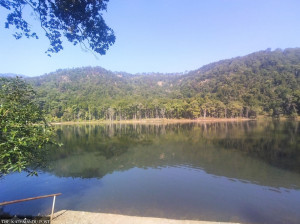Sudurpaschim Province
Dadeldhura Hospital critically understaffed
Government apathy and poor management have made the regional hospital unable to cater to patients’ urgent needs.
DR Pant
Hari Shankar Nath, a resident of Dilasain in Baitadi, visited Dadeldhura Hospital a week ago after suffering a severe stomach ache. After an examination, the doctors referred him to Dhangadhi stating that his treatment was not possible in Dadeldhura.
Dadeldhura Hospital, established by an American doctor around 60 years ago and named Team Hospital, was envisioned as a facility providing health services to the seven hills districts of Sudurpaschim Province.
But today the hospital functions mostly as a centre referring patients to other facilities.
“I was compelled to go to Dhangadhi after the doctors in Dadeldhura Hospital said my treatment was not possible there. I had to spend more money and time to go to Dhangadhi for treatment,” said Nath, who returned home after receiving treatment at Seti Provincial Hospital in Dhangadhi.
Until it was handed over to the Nepal government by the American mission 12 years ago, Team Hospital provided quality services to thousands of people in the region.
The quality of service started declining when the hospital was turned into a sub-regional facility by merging it with the district hospital in 2010.
Five years ago, the federal government decided to turn Dadeldhura Hospital into a ‘state-of-the-art’ health institution. It granted permission to upgrade the hospital to a 500-bed capacity and approved the posts of 1,200 doctors, health workers and administrative staff.
However, the hospital has failed to fill even 109 approved posts from when it was a sub-regional hospital.
There are currently 16 doctors—nine medical officers and seven specialists—and 50 other health workers employed at the hospital.
The hospital is set up in around half a dozen buildings spread over an area of 191 ropanis. Doctors at the hospital say it is equipped with a state-of-the-art laboratory and equipment but has only 30 percent of the required staff.
“We can diagnose diseases like cancer and renal ailments with the available technical resources,” Dr Chetraj Bhatta, chief at Dadeldhura Hospital, told the Post. “But we don’t have adequate human resources to run the tests.”
The government’s negligence and poor management have turned the once-busy hospital into a referral centre, says Karunakar Ojha, chairman of the Dadeldhura Hospital Development Committee. “The federal hospital has to refer patients to Seti Provincial Hospital for a lack of skilled human resources,” said Ojha.
“Our hospital has almost all the hi-tech machines and laboratory equipment that big hospitals in the national capital have. However, the hospital hasn’t been able to provide treatment for even minor illnesses and injuries due to the lack of trained human resources in the laboratory.”
The failure of the hospital to operate to its optimal capacity can also be attributed to politicking, says Ojha. “The institution is hugely affected as major political parties attempt to appoint their activists for key posts there,” he said. “That is also one of the reasons why the quality of service at the hospital has deteriorated.”
Out of the approved 500 beds, only 100 are currently in operation. According to Ojha, the hospital has three laboratories including ones for emergency, general use. “But these laboratories are not fully operational due to the shortage of technicians,” he said.
Though the hospital offers primary care and preventive medical services—orthopaedic, anaesthetic, ENT, paediatric, radiologist, general surgery and dental services, the patients are deprived of the complete package due to a shortage of human resources.
“Dadeldhura Hospital can provide diagnostic services for cancer and kidney patients as well if the vacant posts are filled. However, the hospital has to refer patients who need laboratory tests to the provincial hospital,” said Ojha. “We repeatedly urged the government to fill the vacant posts but our demand remains unaddressed.”
The doctors posted to Dadeldhura do not serve for a long time. According to the hospital staff, they come to Dadeldhura due to the government’s policy of providing scholarships for MD study after serving in remote areas for two years.
According to Bhatta, chief of the hospital, around 200 to 500 patients from Dadeldhura, Baitadi, Bajhang, Darchula, Bajura, Achham and Doti districts visit the hospital on a daily basis but most cases are referred to Seti Provincial Hospital.
“We have been providing health services based on the available resources,” Bhatta said. “If the hospital gets the human resources as needed, we will be able to serve people from across the province.”




 11.12°C Kathmandu
11.12°C Kathmandu












